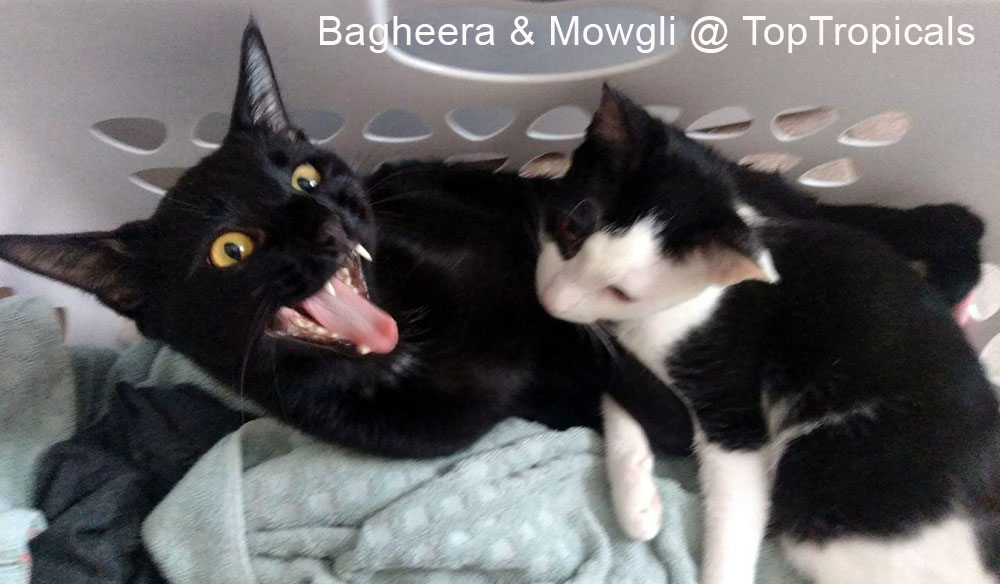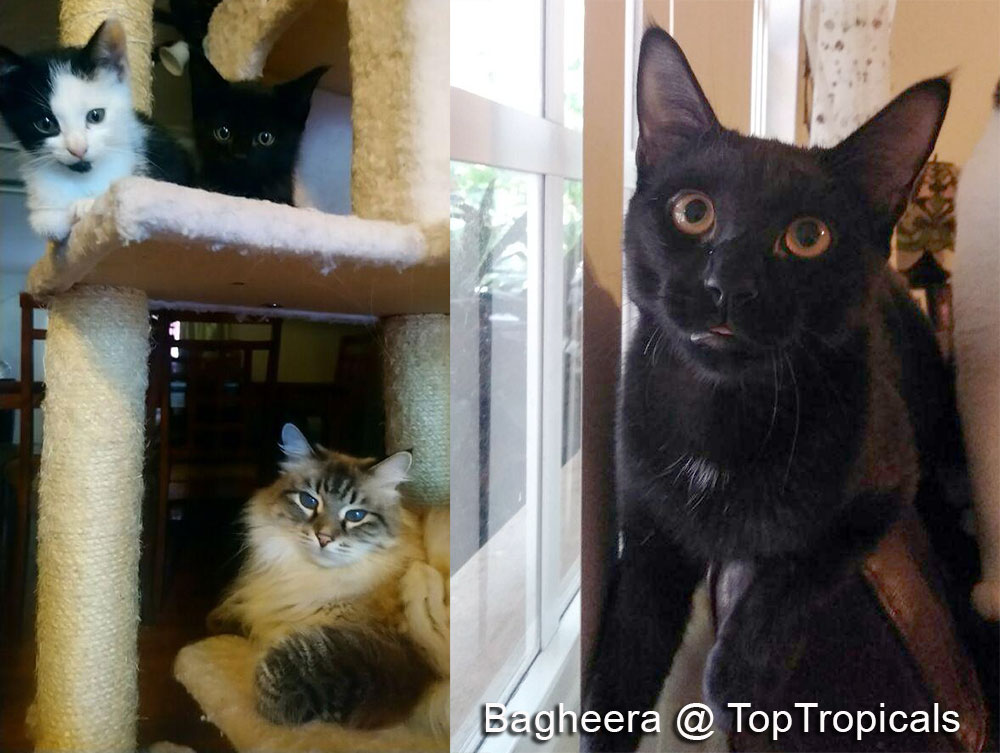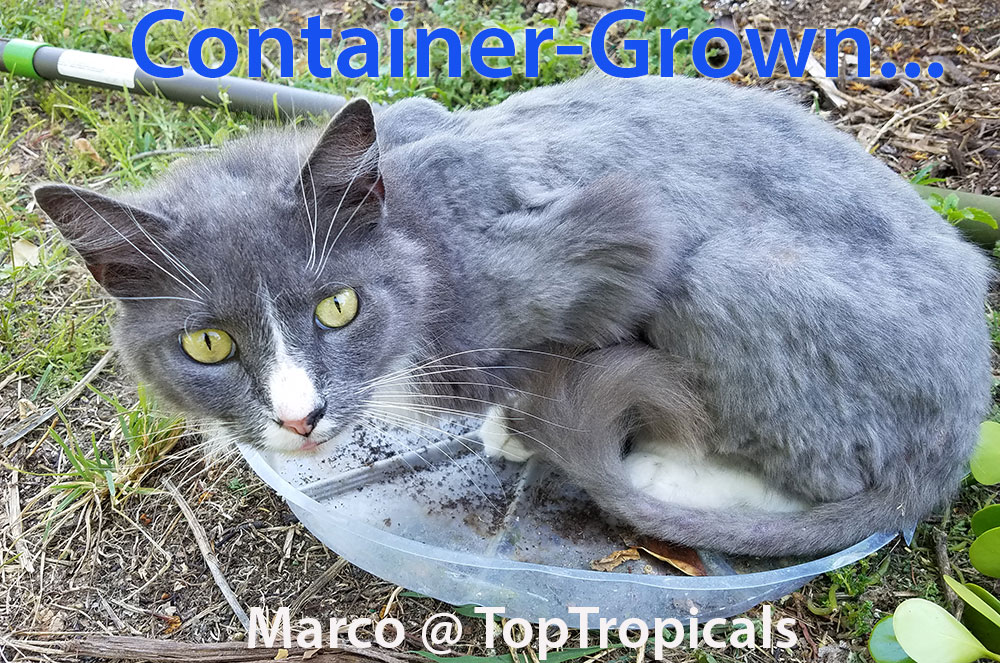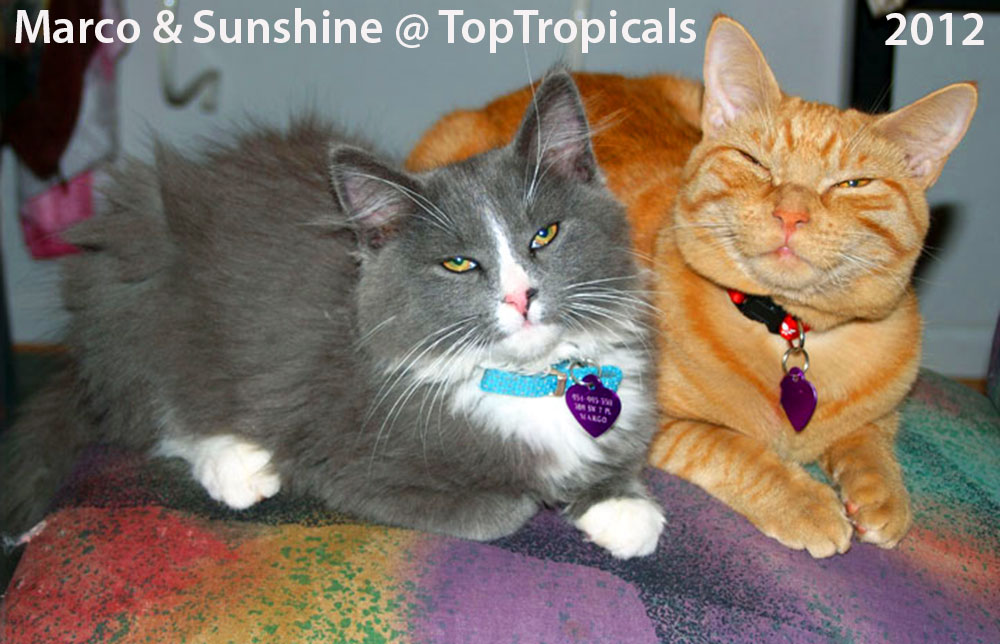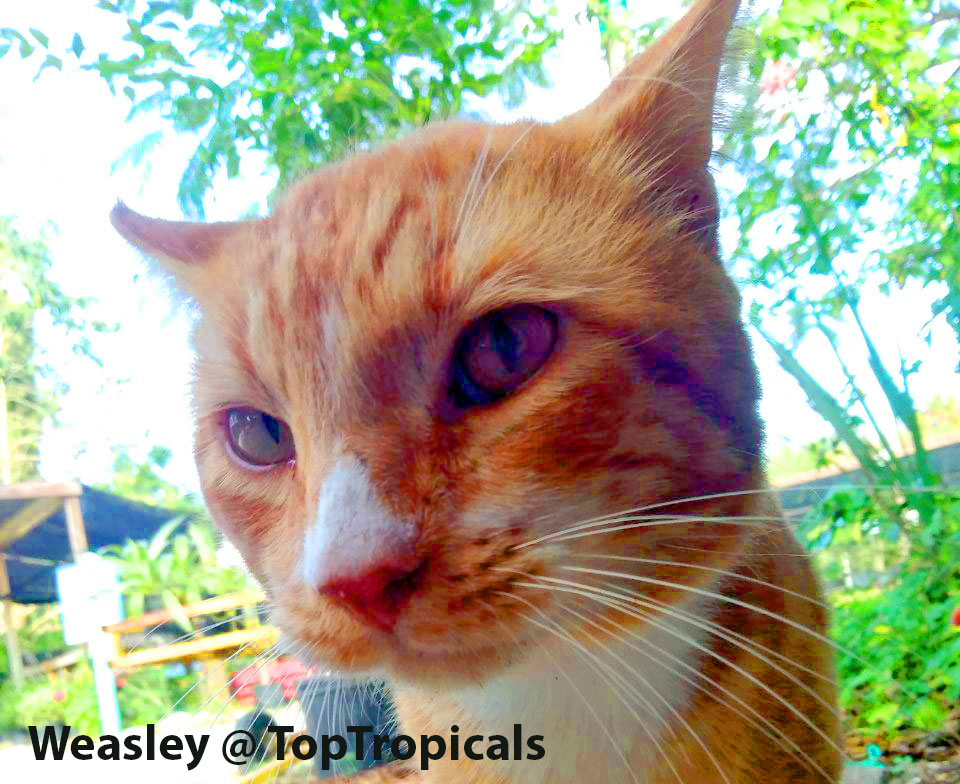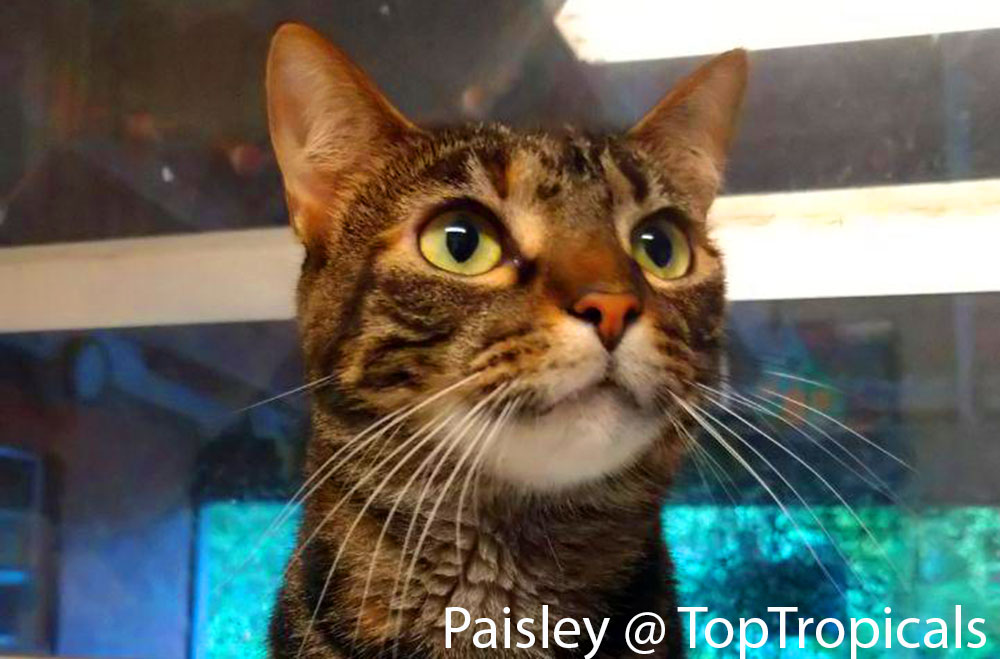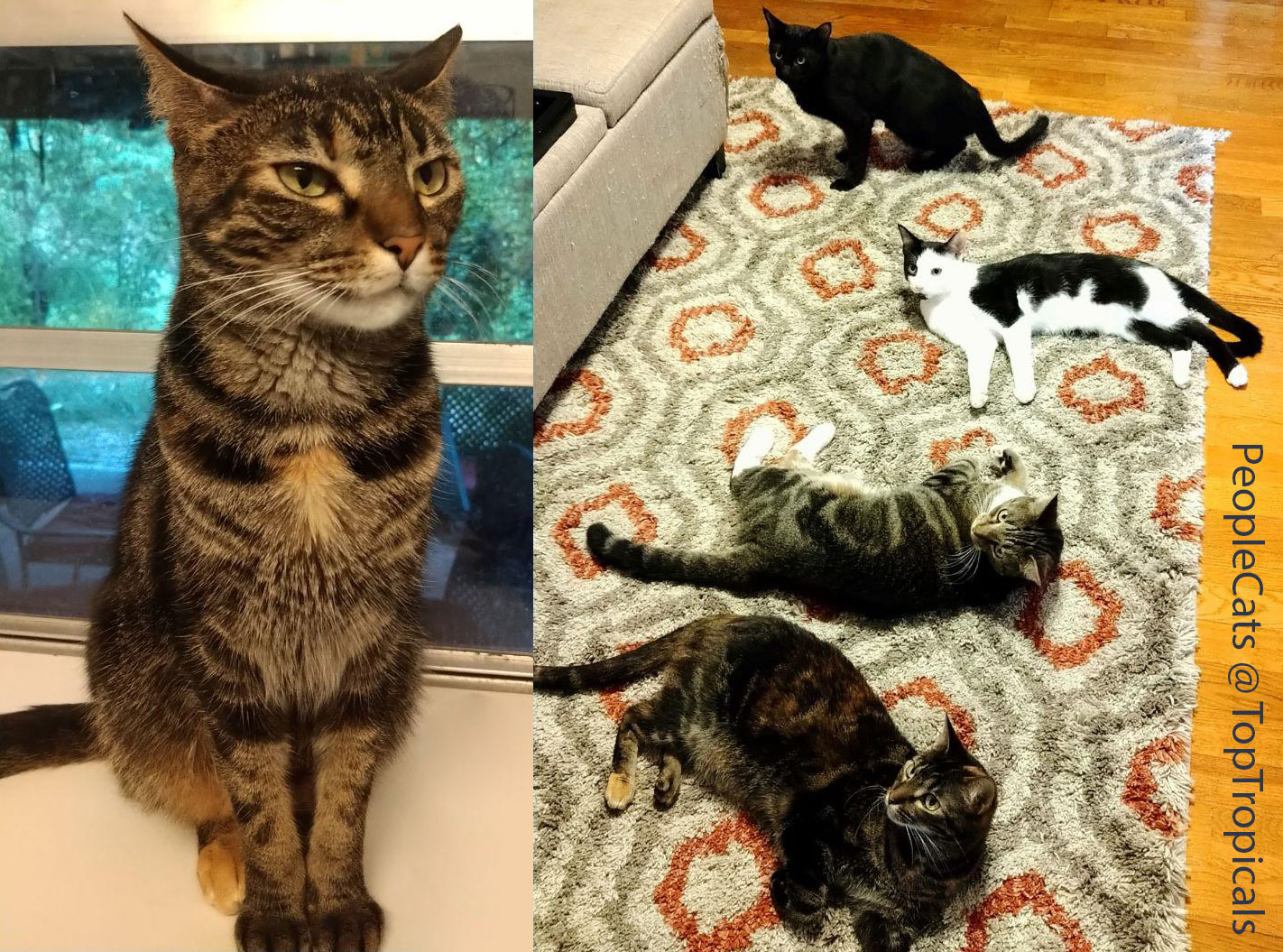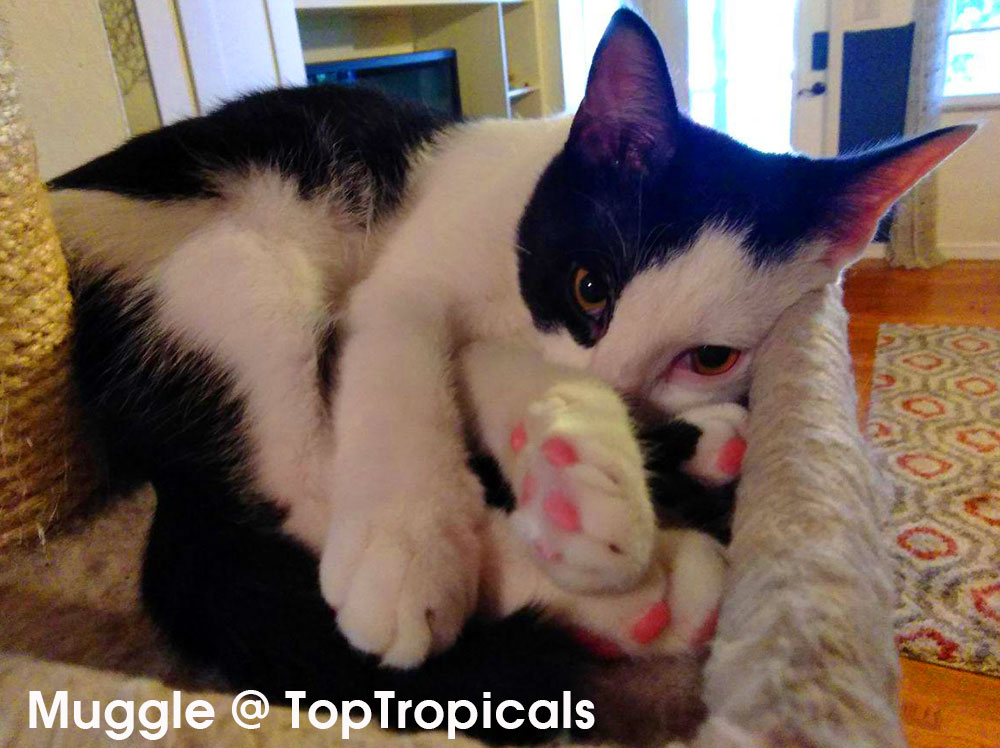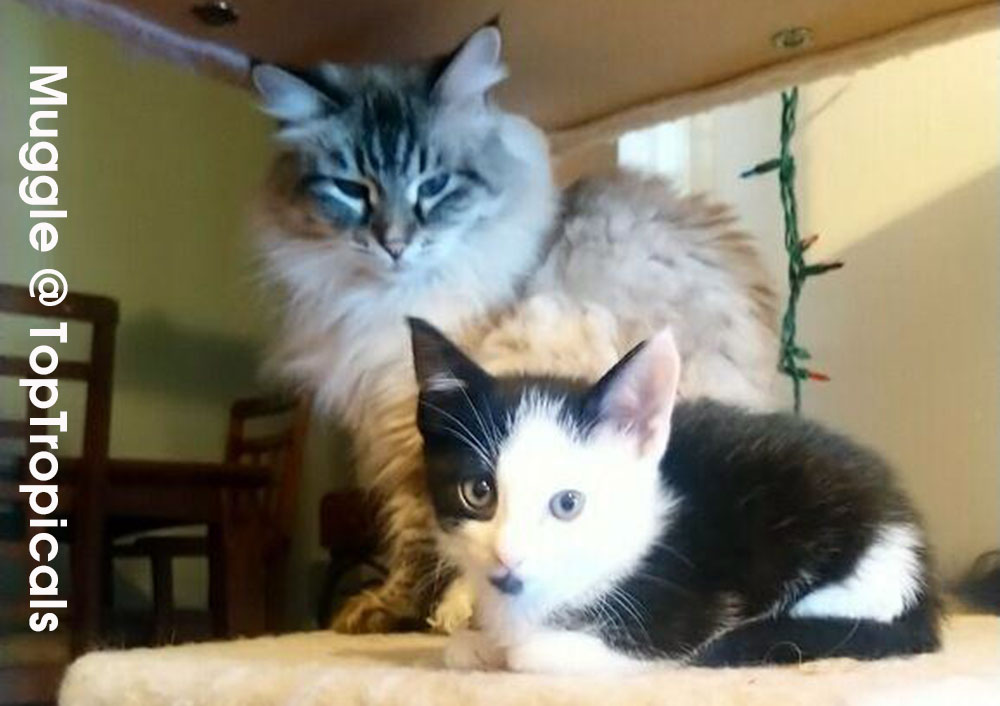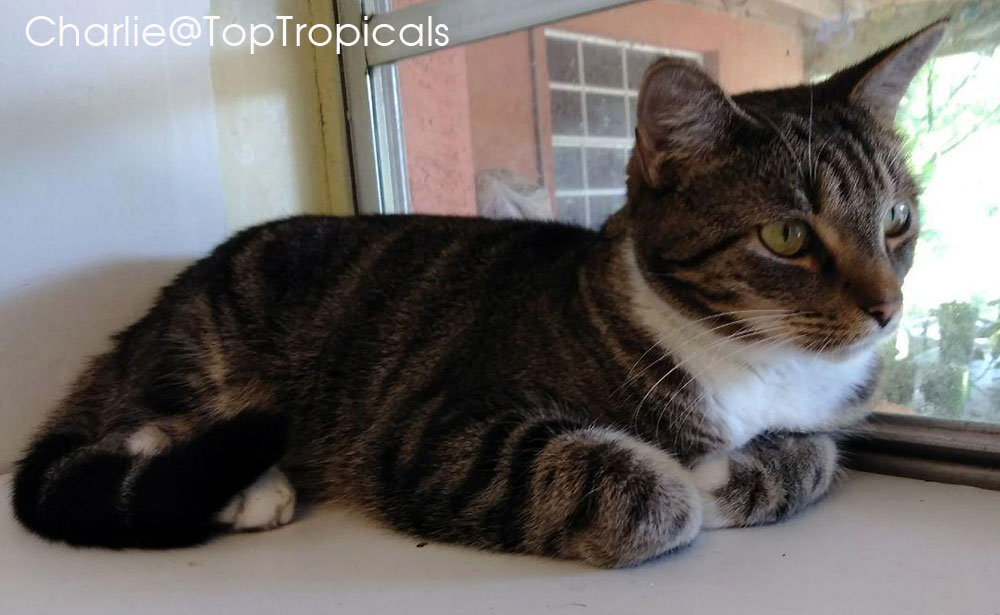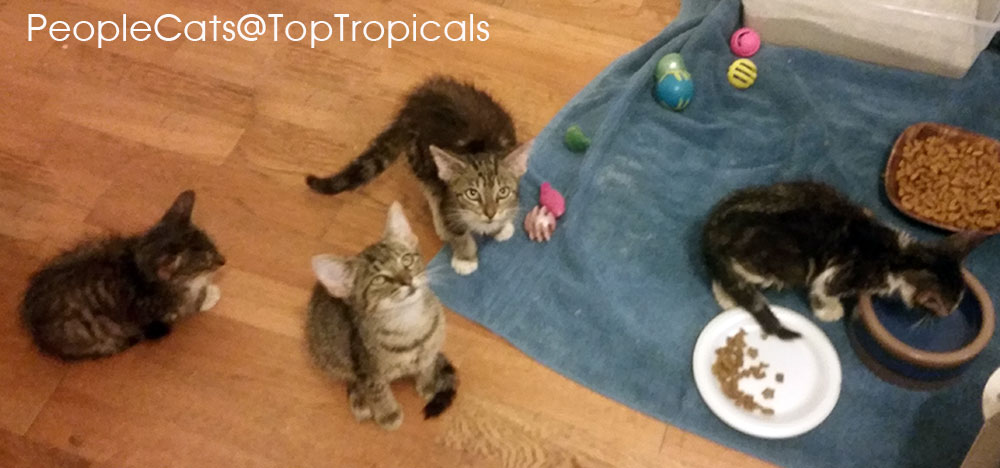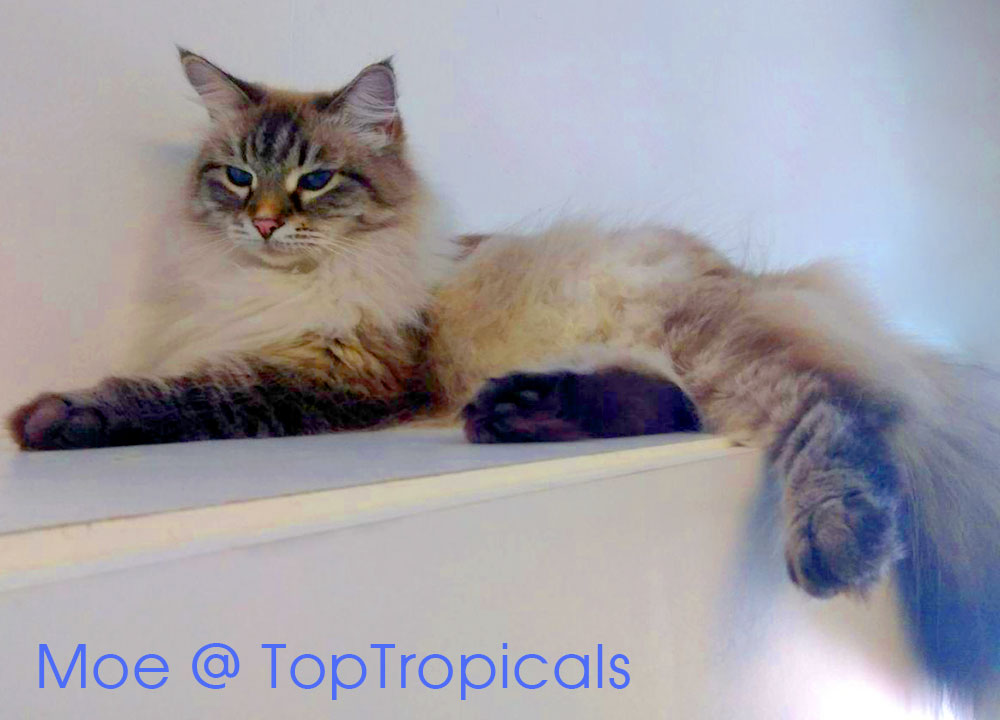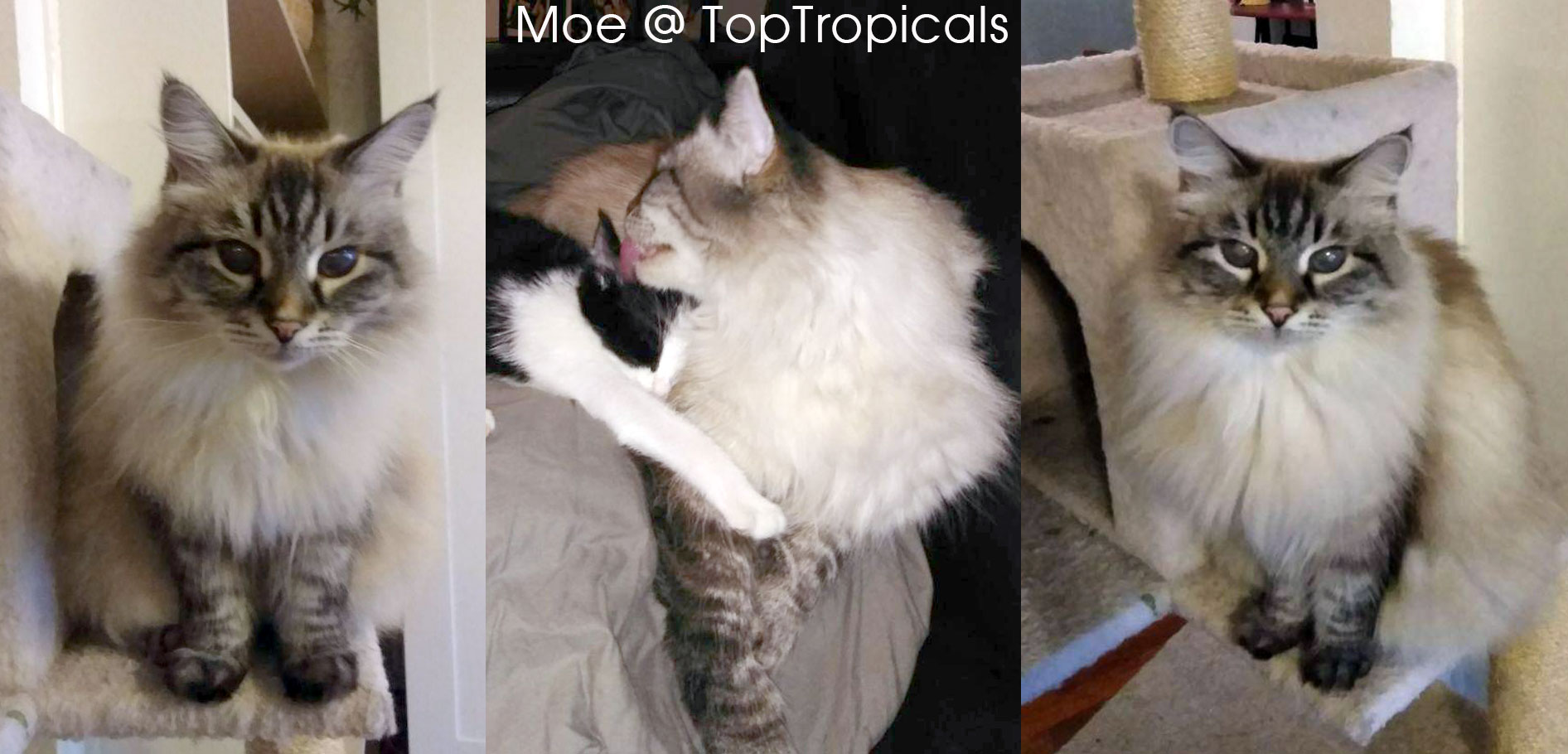Garden Blog - Top Tropicals
Date:
URBAN TROPICAL GARDENING:
10 secrets of successful Container Mango growing on a
balcony.
Q: I live in Miami in apartment on a second floor, and I have a balcony with SE exposure. I wonder if I can grow a mango tree in a pot? Will it fruit for me? I recently moved to South Florida and I don't know much about tropical plants; but I tasted real fiberless mangos from someone's garden - it was so delicious and different from those in the grocery store. I wonder if I can have a fruiting tree on my balcony? And if yes, how do I plant and take care of it?
A:
Yes, you can! Here is what you need to do:
1) Temperature. You are lucky to live in Tropics,
keep it on a balcony year round.
2) Light. Position the pot in a spot with the most
sun exposure. Mango trees can take filtered light too, but
the less sun, the less fruit you will get.
3) Soil and Container. Use only
well drained potting mix. Step up the purchased
plant into next size container (3 gal into 7 gal, 7 gal
into 15 gal). When transplanting, make sure to keep growth
point (where roots meet the trunk) just at the top of the
soil. Covering base of the trunk with soil may kill the
plant.
4) Water. Water daily during hot season, but only
if top of soil gets dry. If it still moist, skip that day.
Mangoes (unlike
Avocados!) prefer to stay on a dry side.
5) Fertilizer. Use
balanced fertilizer once a month, 1 tsp per 1 gal of
soil. Do not fertilize during fruiting - this may cause
fruit cracks.
6) Microelements. Apply
SUNSHINE-Superfood once a month. This will help your
mango healthy, vigorous, and resistant to diseases. Use SUNSHINE-Honey to make your
fruit sweeter.
7) Insect control. Watch for scales and mealybugs,
clean with solution of soapy water + vegetable oil (may
need to repeat 2-3 times with 10 days interval), or with
systemic insecticide like imidacloprid only as needed (if
non-harsh treatment didn't help). Most Flea shampoo for
dogs contain that chemical, you may try that shampoo
solution.
8) Trimming. Once potted, do not remove leaves
that are discolored or have spots until new growth
appears. Dark dots on mango leaves, especially in humid
climate like Florida, may be signs of fungus. Treat with
fungicide according to label, and remove only badly
damaged leaves. Trim crown as needed after flowering and
fruiting (by Fall). Train into a small tree, and you may
remove some lower branches eventually.
9) Flower and fruit. Mangoes are winter bloomers
with bunches of tiny flowers coming in thousands. Many of
them set fruit (if pollinating insects present). Keep in
mind that young trees can only bare a few fruit. Normally
a tree will drop excessive fruit and keep only a few that
it can manage. To save the young tree some energy, remove
fruit if too many and leave only 2-3 for the first year.
It will pay you next year with more abundant crop.
10) Variety. Last but not least: Choose the right
variety for container culture! Pick from "condo" dwarf
varieties such as Icecream, Nam Doc Mai, Carrie, Cogshall, Julie, Fairchild, Pickering, Graham, Mallika, and a few others -
check out Mango Chart pdf
and full list of our Mango varieties.
Date:
Growing sapodilla in container and indoors
Q: I live in northwestern Washington state. I was wondering if I can grow a Sapodilla tree indoors in a container? Are they self-fertile, and which variety do you think would do best in a large container?
A: A: All Sapodillas are self-fertile. They can be successfully
grown in pots due to their slow growth rate and compact nature. The most
important requirement for successful growing and fruiting is a bright light, other
than that it is a very undemanding plant and is not fussy about watering.
The best variety for potting culture is Silas Woods which is a dwarf kind. This variety is the most profuse
producer, flowering and fruiting nearly year round providing bright light and
warmth. Although the fruit are smaller than other varieties and average 3-4"
size.
Sapodillas require regular fertilizer applications for good production.
We recommend Fruit Festival slow release fertilizer for the best results.
Date:
Meet PeopleCats of TopTropicals. Cat of the Day: Bagheera
Bagheera and Mowgli are Kristi's PeopleCats, originally they came together and they stick together. As little kittens, they were raised by Moe, the Mama-cat. Although she is not technically their Mom, but... she is a Mom for everyone!
Bagheera was born with his brother at a gator farm. He was too little to leave his mom, but he needed out. Bagheera is one of the sweetest boys we know. When he was a baby he could not sleep without laying on Kristi's face, both paws stretching across her mouth. Now he's a big brave boy. He rules the inside PeopleCats, stealing food from his human's plates and asking forgiveness at night when he lays above your head with his hands on your face. He's a reminder that we are all still little kittens on the inside...
Bagheera's new nicknames are Mr Biggs, Biggie and Biggy Biggy Biggy!
Check out and more Cat of the Day stories.
Date:
Meet PeopleCats of TopTropicals. Cat of the Day: Field Grown Marco
Marco loves growing plants and be involved in different projects outside. He is good at finding spots either on top, or inside some inappropriate objects. Yet simple boxes, that most cats find super comfy, do not interest him. Is has to be a plant container, saucer, or even a charcoal grill full of ash... He can sit in some weird places for hours like on top of a fence pole, or lay in the middle of a busy walking traffic while everybody have to step over or walk around him... We have quite a collection of Marco's special places and will be sharing with you!
Check out and more Cat of the Day stories.
Date:
Meet PeopleCats of TopTropicals. Cat of the Day: Weasley the Immigrant
Weasley came from the neighborhood cat community (our neighbor takes
care of at least a dozen of cats). Whether TopTropicals dry food tastes better
than neighbor's, or simply he is such an enthusiast of tropical gardening, he
hangs out with us all the time.
When you see him in our Garden
Center drinking milk or chilling right on the walkway with other
PeopleCats, don't get him confused with other two ginger cats we have: Barcy and Snitch... as well as the Russian Blue cat with a similar name Wesley...
Although Weasley currently has a status of a legal immigrant, he feels
pretty confident around our greenhouses and will be happy to give you a tour. He
is still a volunteer here but has already applied for a permanent residence
and a full time position, so his food needs are being added to our cat
payroll.
When visiting TopTropicals nursery, feel free to add your donation to a Cat
Jar located in our office by customer's computer. We appreciate everybody's
help - every penny goes to PeopleCat's needs.
Check out Video: Meet PeopleCats of TopTropicals and more Cat of the Day stories.
Date:
Meet PeopleCats of TopTropicals. Cat of the Day: Independent Paisley
Paisley is an independent cat that prefers to spend her time alone. She is Snitch's sister, both of them came to us two years ago from our co-worker Cindy (Purry's Mom). Even though Paisley is the smallest of Kristi's inside PeopleCats, she will make sure no food is wasted and finishes the other cats' food after they leave their bowls. She enjoys catching lizards when she gets outside time on the porch. Her excellent hunting skills would make her a great outdoor cat, but we are afraid she will become bird prey due to her small size.
Check out and more Cat of the Day stories.
Paisley likes hanging with the other cats if there's a rug involved!
Date:
Meet PeopleCats of TopTropicals. Cat of the Day: Muggle the Snuggle
The sweet talking bathroom cat
Muggle* (or some call him Mawgli) is the little brother to Bagheera. We call him the sweet talker because he really does talk to you. As soon as he sees you he wants to have a conversation. He meows at you and if you meow back he will continue the talk. He is our bathroom cat because he loves to sit in the bathroom with you and purrrrrr. We think maybe he sees this time as his alone time with his humans, his one-on-one time when he doesn't have to share the attention with the other PeopleCats!
* His name is actually Muggle, Jamie named him after Harry Potter which she loves.
Check out and more Cat of the Day stories.
Date:
Meet PeopleCats of TopTropicals. Charlie, the Indoor Hunter
Carlie was a kitty drop off with LadyBug, Rickie, and Purry.
Charlie is Jamie's baby. She has an attitude of a teenager, one minute she
loves you and the next - wants nothing to do with you. Carlie stays with the
inside PeopleCats, she says it's too big in the outside world for her and she
gets scared. Carlie has a fun game (fun to her): she plays around 2:00 am in
the morning, she loves to drag random items down the hall (socks, toys,
shirts, even blankets) in her mouth MEOOOWWWING as loud as she can. She then sets
the items down on her human's bedroom rug and waits for her human to say
thank you. We're pretty sure her hunting instinct is off...
Check out and more Cat of the Day stories.
2019, from Top to Bottom: Moe, Charlie, Bagheera, and Snitch. 2016: Charlie
Date:
Meet PeopleCats of TopTropicals. Mommy Moe, meep-meep!
Moe is the oldest of the indoor PeopleCats. She came to us six years
ago. She is a Siberian, these are sold as hypoallergenic cats... Unfortunately
for Moe's previous owner, she is not hypoallergenic! Lucky for us she is a
purrrrfect fit.
Moe is the mommy cat to all others. She takes all new People under her wing
and shows them around. She is a very sweet purrrson, and very smart. She
loves turning lights off on you and playing fetch with her toy mouse. Siberian
cats have a very unique meow. It is actually more of a "meep-meep", there is
no eowww part!
Check out and more Cat of the Day stories.
Keeping us clean and happy!
Moe raising Bagheera and Mowgli
Date:
Jungle on Windowsill 101

Q: I got a Jasmine Sambac and a Tahitian gardenia as presents, they are very cute plants with flowers and flower buds. I would like to be able to keep them alive and hopefully happy for a long time, but I don't know much about growing tropical plants, and I am not sure if my thumb is green enough to make everything right. What do they need? How much sun? How much water? What kind of soil? Sorry for all these (maybe silly) questions, but I want to keep them alive, please help! I live in Wisconsin and we had some snow again last week.
A: Growing tropicals is not a hard work, it is a lot of fun! These plants are actually a good starters for a beginner who wants to try growing tropical plants, no matter if you live in a mild frost-free climate, or up North where you can have these beauties as houseplants. Below are a few simple steps for you:
1. Read. Follow planting instructions included with your plants. Check plant names on the tags and learn more about them from our online catalog.
2. Soil. Plant in quality potting mix - it must be porous and well-drained, never use heavy soils (top soil or garden soil are no-no), in a pot exactly the size of the root system. You can step up your plants in the next size container once you notice vigorous new growth. Next size means: 4" pot can go into 6" pot, 6" pot into 10" pot, etc. Too big of a pot may create rotting environment, root system must fill the entire container to use all the moisture from the soil. Container must have good hole(s) for excess water to drain through. Put the pot in a saucer and get rid of excess water every time after watering.
3. Light. Most tropical plants require lots of light in order to produce flowers. If you ever visited Florida, remember the bright sun? - these are ideal light conditions for tropicals. Up North, provide as much light as possible: a bright spot on a windowsill of Southern or Western exposure would work the best. If the sun gets too hot in summer afternoon, you may shade the window a little bit with a sheet of white paper to avoid leaf burn.
4. Water. Keep soil slightly moist but not soggy. The best way is to wait until the top of the soil feels dry to touch - this is time to water again. Jasmines prefer to stay on a dry side; gardenias do not like soil to dry out - keep them slightly moist as long as soil is very porous and well-drained.
The main reason of most problems with potted indoor plants is over watering. With experience, you will feel the right balance of moisture in the soil: the brighter the light, the more water is consumed by a plant; the less light, the less frequent you should water.
5. Trimming. In low light conditions, plants tend to become leggy. Trim branches as they become too long: the more you trim, the busier the plant gets. New growth promotes more profuse blooming in many species.
6. Fertilizing. Fertilize indoor plants with slow-release granulated fertilizer from march to November.
7. Insects. Check for insects at least once a month, especially underneath the leaf. If notice any problems (deformed leaves, residue, holes, or tiny insects) - clean the leaves/stems with a solution of warm water (1 cup), vegetable oil (2 table spoons), and a few drops of a dish soap.
8. Fresh air and air humidity. As soon as air temperature gets above 65F, bring your tropicals outside in the sun and fresh air: porch, balcony, outside in the yard. Air circulation is essential for your plant health. Bright light and high air humidity will promote vigorous growth, and lots of flowers for you to enjoy!
For more information on growing Tropical Plants 101, see Problem solving with potted plants - how can we help them?.



